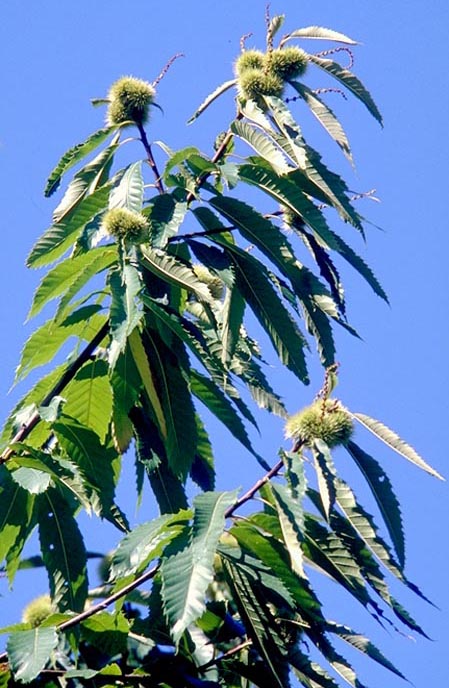
|
The sweet chestnut (Castanea sativa) has represented a primary resource for generations of mountain farmers in the Apennines and in other Mediterranean mountain regions. Its fruit, a brown smooth nut held inside a thorny husk, was the main food, eaten as such, or ground to flour. This tree provided also rustic timber for buildings and tools; and, last but not least, fuel in the chilly winters. So, if you, like myself, descend from those people, who emigrated almost everywhere in the world, somehow you owe your life to this tree.
The chestnut is a magnificent tree, but unfortunately it is a target of a deadly disease, known as chestnut blight, which jeopardied its existence in many countries. The chestnut forest is thick and the underwood is a rich carpet of dead leaves, where flowers and good mushrooms flourish. In late spring, its deep green is covered by a golden cloak, because of the brilliance of its inflorescences. During these months one can really see how golden has been the chestnut, and still is. learn more on this link
|
|

